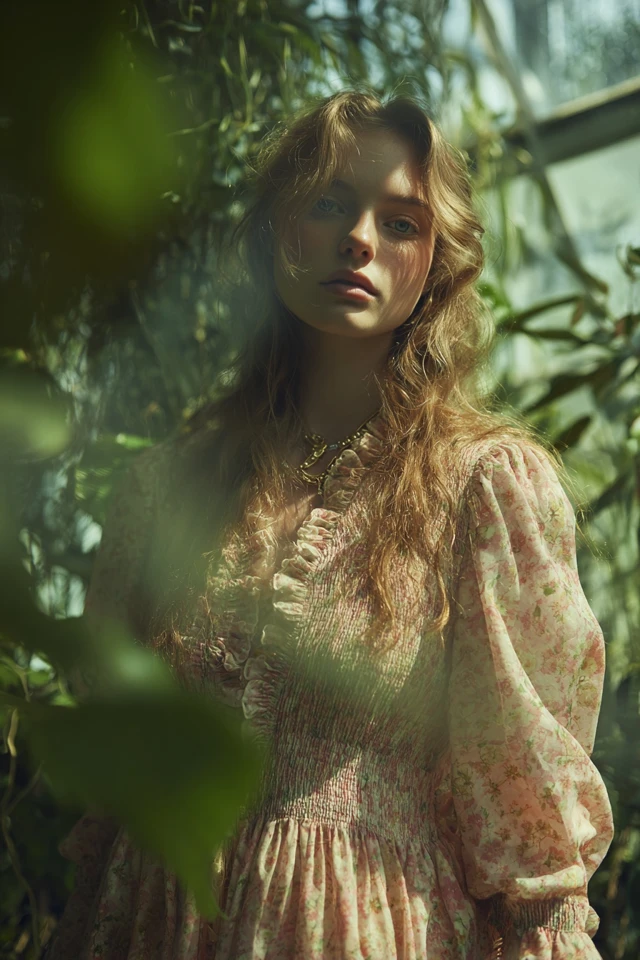Introduction
There’s a certain magic that unfolds when the first blossoms of spring emerge, and with them, the whisper of fresh fashion inspiration. I remember standing by my window one crisp morning, watching cherry blossoms sway gently in the breeze, the soft pastel light bathing my cozy reading nook. In that moment, I realized how profoundly fabric, color, and style capture the mood of a season. The cottagecore aesthetic, with its romantic embrace of nature and nostalgia, perfectly embodies this springtime spirit. It’s a style that transcends mere clothing— it’s a way to feel connected to the earth, to history, and to oneself.
Exploring spring cottagecore fabrics is not just about following a trend; it’s about understanding how the textures, patterns, and colors we choose affect not only how others perceive us but how we perceive ourselves. As someone deeply invested in fashion design and color psychology, I find this dialogue between fabric and emotion endlessly fascinating. The tactile softness of linen, the gentle drape of voile, the whimsical prints of florals—these elements come together to create outfits that radiate warmth, authenticity, and confidence.
About the Author and My Trend Boutique
Why does this matter? Because clothing is one of the most accessible tools for self-expression and empowerment. Especially when grounded in thoughtful fabric choices aligned with psychological insights, fashion can elevate mood, boost confidence, and create meaningful first impressions. In this post, we will dive deep into the world of spring cottagecore fabrics, exploring foundational concepts, color psychology, style considerations, current trends, and practical advice to help you curate a wardrobe that feels as good as it looks.
Foundational Concepts
Before diving into specifics, it’s important to understand a few key concepts that underpin the synergy of fashion, fabric, and psychology.
Color Psychology
Color psychology examines how hues influence our emotions and behaviors. Through decades of research, we know that colors can evoke feelings like calm, energy, nostalgia, and intimacy. For example, soft pastels such as sage green and blush pink often evoke tranquility and femininity—qualities central to cottagecore aesthetics. Recognizing these emotional connections allows us to select fabrics and garments that not only complement our complexion but also align with our desired mood or message.
Trend Forecasting
While cottagecore has its roots in a romanticized vision of rural life, it evolves each season through trend forecasting—a practice that combines market analysis, cultural shifts, and consumer behavior. Designers and forecasters study these patterns to predict which fabrics, colors, and styles will resonate next. For spring, natural fabrics like cotton muslin and soft linens, combined with delicate florals and vintage-inspired prints, remain consistent favorites. However, blending classic cottagecore staples with subtle contemporary twists sustains its relevance.
Dressing to Impress
Dressing to impress is about more than aesthetics; it’s a strategic act of communication. Research shows first impressions form within seconds and rely heavily on visual cues such as color and texture. Choosing fabrics that reflect light softly or drape beautifully can convey confidence, approachability, and style competence. Within the cottagecore palette, this means selecting materials that exude comfort and craftsmanship, whether you’re attending a spring picnic, a casual brunch, or a creative work setting.
Picture Gallery
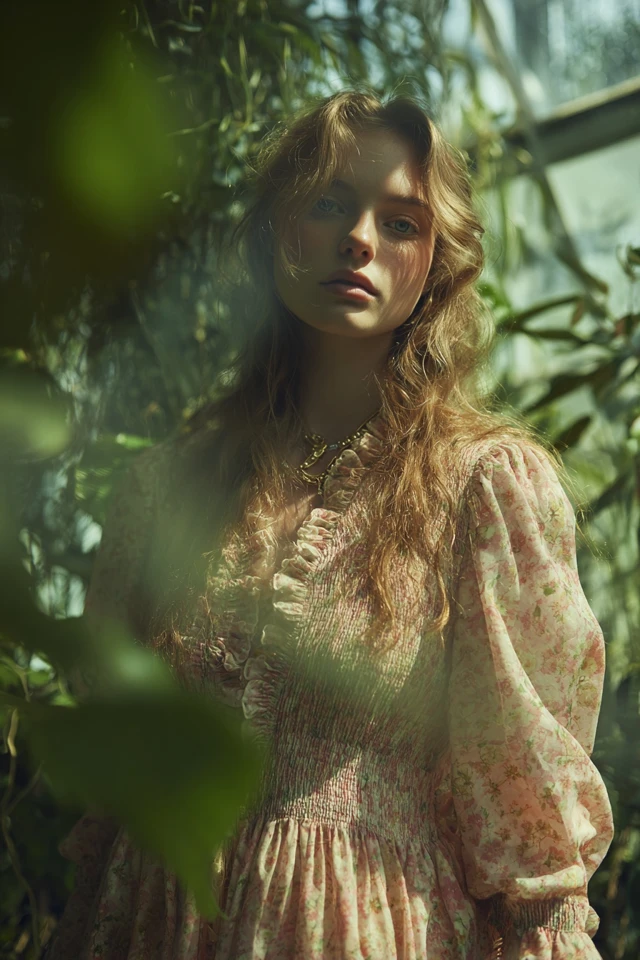
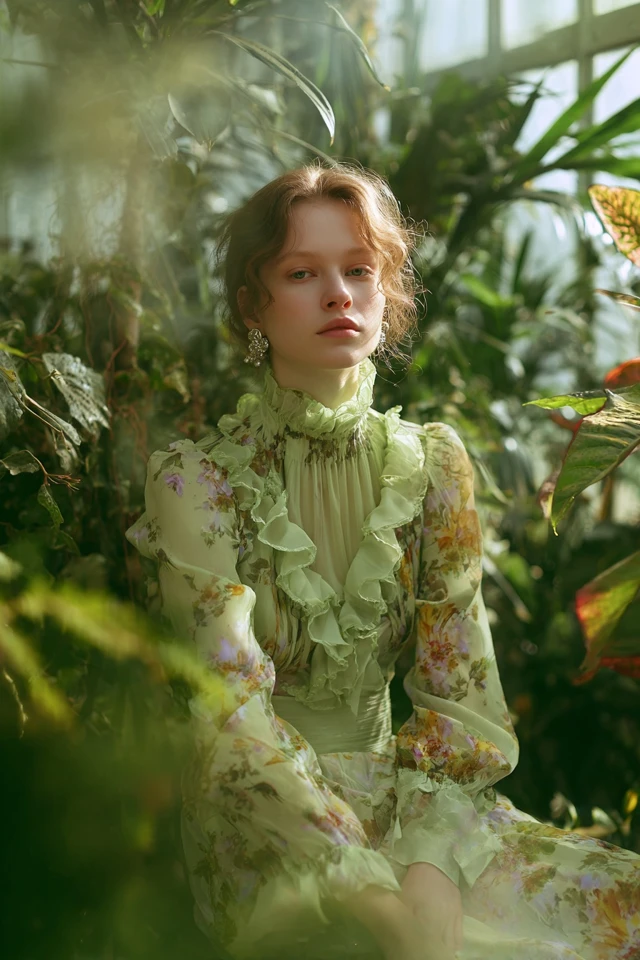
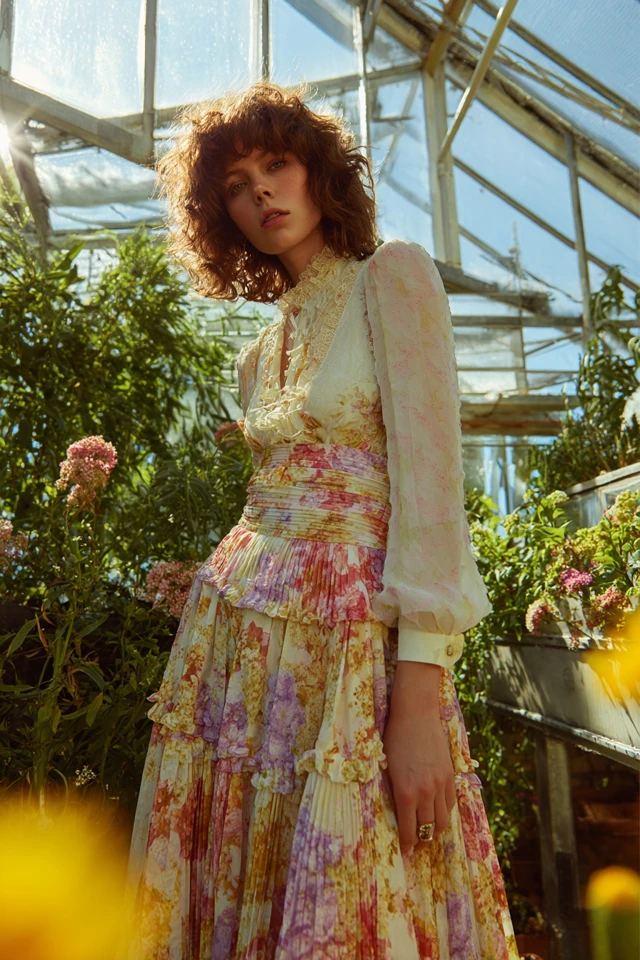
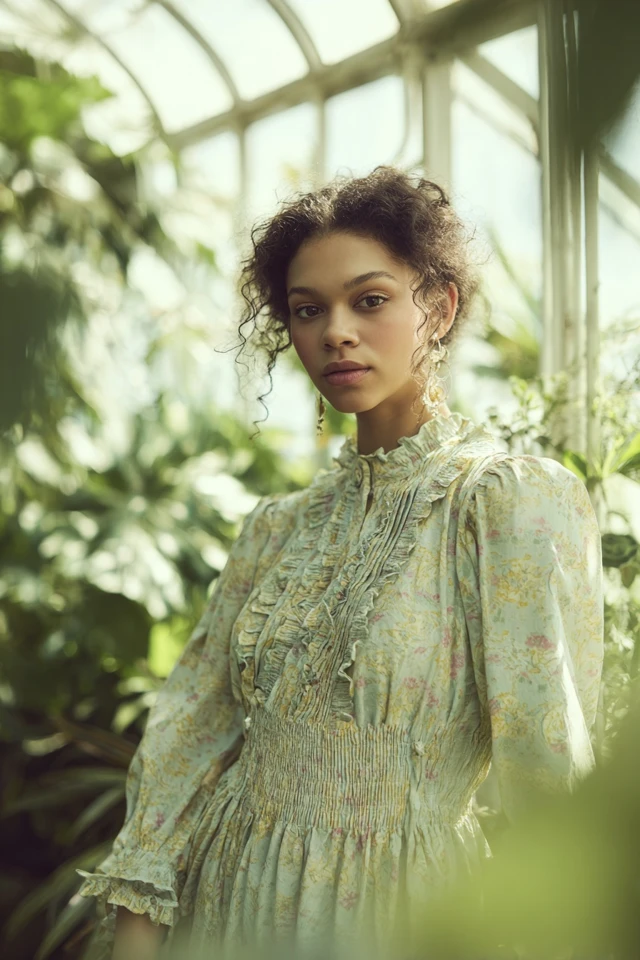
Color Psychology & Emotional Impact
The colors and textures of spring cottagecore fabrics have a unique way of influencing our mood and the impressions we leave. The interplay between soft, earthy tones and gentle florals serves to evoke feelings of serenity, warmth, and nostalgia—ideal states for beginning the day or engaging socially.
Warm Earth Tones: Shades like creamy beige, buttercup yellow, and moss green can feel grounding and rejuvenating. These colors mirror natural landscapes and promote emotional stability, making them perfect for garments meant to comfort and inspire.
Pastel Palette: Blush pink, lavender, and baby blue are staples in cottagecore fabric selection. These hues stimulate calmness and openness. Pastels often soften facial features and signal approachability, enhancing social ease.
Floral Prints: Beyond color, patterns influence perception. Floral motifs often suggest femininity, delicacy, and romanticism. This visual association can increase feelings of self-confidence by connecting wearers to timeless beauty standards without feeling forced or outdated.
Research in first-impression psychology confirms that fabric colors and patterns influence how quickly and positively people judge our personality traits. Selecting spring cottagecore fabrics with intention boosts self-perception and encourages a positive feedback loop between how you feel and how others perceive you.
Personal Style & Body Type Considerations
One of the beauties of cottagecore fashion is its versatility. Whether you prefer flowing prairie dresses or tailored linen shirts, understanding how fabrics and colors interact with your body type and complexion empowers you to dress with ease and elegance every spring.
Silhouettes & Fabrics by Body Type
- Petite: Opt for lightweight linen or cotton voile to avoid overwhelming your frame. High-waisted skirts and fitted bodices elongate the silhouette while embracing cottagecore charm.
- Curvy: Fabrics with a bit of stretch or drape like cotton blends and soft chambray celebrate curves without clinging excessively. Empire waists and wrap styles emphasize your best features gracefully.
- Tall: Long, flowing fabrics such as rayon or linen blends look stunning and allow you to layer without bulk. Incorporate delicate floral prints to soften your frame.
Complexion & Color Matching
- Warm Complexion: Embrace warm earthy tones like mustard, olive, and peach in your fabrics to highlight your natural glow.
- Cool Complexion: Choose soft pastels such as lavender, icy blue, and dusty rose to complement cool undertones.
- Neutral Complexion: You’re lucky! Both warm and cool cottagecore palettes will work beautifully. Focus on fabric texture and pattern.
Style Checklist: Find Your Cottagecore Fit
- Do I prefer structured or flowing silhouettes?
- Which colors enhance my complexion and mood?
- Are natural fibers comfortable for my skin and climate?
- How do I want my clothes to make me feel—cozy, sophisticated, playful?
- Which accessories complement my overall look without overwhelming?
Current Trends & Timeless Classics
This spring’s cottagecore movement spotlights a mix of fresh trends blended with evergreen classics. Cottagecore has expanded beyond floral dresses to embrace thoughtful minimalism and sustainable materials.
Trending Colors: Soft sage green, muted lilac, and serene sky blue are very much on the rise, providing modern alternatives to traditional pastels. These shades maintain the romantic softness while aligning with broader eco-conscious trends.
Style Innovations: Puff sleeves with lace trims and square necklines are stylish flourishes gaining popularity. Smocking and ruching bring texture and shape, enhancing cottagecore’s vintage flair.
Timeless Classics: Linen and cotton remain bedrocks of this aesthetic—breathable, versatile, and seasonally appropriate. White eyelet fabrics and gingham prints endure as symbols of countryside charm.
Understanding how to mix these elements helps you create a balanced wardrobe. For example, pairing a trending sage-green puff-sleeve blouse with classic high-waisted jeans or a gingham skirt allows you to play with current styles while anchoring your look with perfectly timeless cottagecore pieces.
Practical Tips & Recommendations
Ready to translate these insights into your wardrobe? Here are actionable tips to help you shop, style, and maintain your spring cottagecore fabrics with confidence:
- Prioritize Natural Fibers: Linen, cotton, and silk blends breathe well and offer the authentic texture integral to cottagecore style.
- Layer Thoughtfully: Combine light cotton blouses with knitted cardigans or soft shawls to adapt to spring’s variable temperatures.
- Accessorize with Intention: Woven straw hats, pearl hairpins, and vintage-inspired leather sandals enhance the cottagecore narrative without competing with fabric textures.
- Maintain Fabrics Properly: Wash delicate materials on gentle cycles with mild detergents. Air dry to preserve structure and avoid color fading.
- Experiment with Color Combos: Try blush pink skirts with sage-green tops or cream-colored blouses paired with muted lavender scarves for fresh spring palettes.
- Shop Sustainably: Support brands that prioritize eco-friendly dyes and organic fibers to align your fashion choices with cottagecore’s ethos of harmony with nature.
FAQs
- What is the best signature color for a spring cottagecore wardrobe?
- Soft pastels like blush pink or sage green are excellent signature colors. They convey the season’s freshness while providing versatility across different outfits.
- How can I update my cottagecore wardrobe on a budget?
- Focus on versatile basics in natural fabrics and incorporate trend-forward accessories. Thrift shopping and upcycling old garments into new silhouettes can also breathe new life into your collection.
- Is cottagecore style appropriate for professional settings?
- Absolutely. Choose subtle prints, structured silhouettes, and neutral hues to maintain a polished look while embracing cottagecore’s relaxed charm.
- How do I build a capsule wardrobe focused on spring cottagecore?
- Identify key pieces such as a linen blouse, a floral midi skirt, a lightweight cardigan, and natural fiber accessories. Mix and match these staples with seasonal layers to maximize outfit options.
- What fabric textures should I avoid if I have sensitive skin?
- Heavier synthetics and overly coarse materials may irritate sensitive skin. Opt for soft, breathable fabrics like organic cotton, silk, and fine linen to ensure comfort and style.
Conclusion
Diving into the world of spring cottagecore fabrics reveals a dynamic interplay between color psychology, fabric texture, and personal style. By understanding these foundational principles, you can curate a wardrobe that not only aligns with current trends but also boosts your confidence and emotional wellbeing. Whether you favor breezy linens or delicate floral prints, each fabric choice is an invitation to express authenticity and embrace self-love.
Don’t be afraid to experiment—layer different textures, explore new color combinations, and tailor silhouettes to your unique body and spirit. Fashion within the cottagecore realm is as much about connection and creativity as appearance. I encourage you to share your own cottagecore style journeys in the comments, spread inspiration by sharing this post, and subscribe for more insights that marry academic rigor with approachable fashion expertise.

